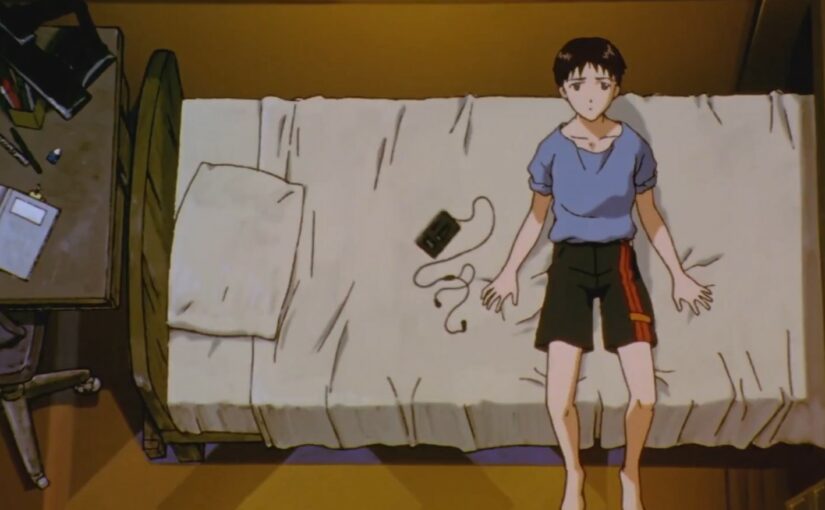I can’t believe I waited this long to watch the legendary anime: Neon Genesis Evangelion–aka AVA. This anime was incredible. A pure masterpiece.
Although this shounen anime is about giant machines called Evangelions fighting biblically sized monsters, the action didn’t sell this show. What really sells this show is the incredible character development and the exploration of psychological trauma, loneliness, and depression.
The protagonist of most shounen anime is an energy ball of pure skill and talent ready to leap into danger to save the world. In AVA, Shinji is a shy, weak, timid 14-year-old boy who is always doubting himself. Although Shinji has the ability to sync with an Evangelion, that is only because his very own mother was turned into the Evangelion. We see Shinji crumble into depression throughout the show– and not the kind that shounen protagonists typically just pop right out of. Shinji has a hard time dealing with the pressure of saving the world. Shinji longes for admiration from his father, who is distant. Shinji questions his sexuality and desires with characters like Kaworu and Rei. And most important, Shinji fears hurting others and has a problem with intimacy.
SEELE presents the solution to human suffering as the human instrumentality project. A plan that will combine all of our minds into one entity to fill in each other gaps. The show presents two endings to the show. The first in the last two episodes of the anime explores Shinji’s mind after the Human Instrumentality Project. Shinji learns the importance of individuality and what it means to be intimate with others and breaks out. The movies Death and Rebirth and The End of Evangelion present a darker ending to the story. Although Shinji concluded that individuality is important and breaks out of the singular being, he is doomed to repeat his past mistakes. The ending scene is of Shinji strangling Asuka.
There is so much more that could be said about this show, especially with confusing endings. After watching it a second time, I’ll come back and write a second version of this reflection.

